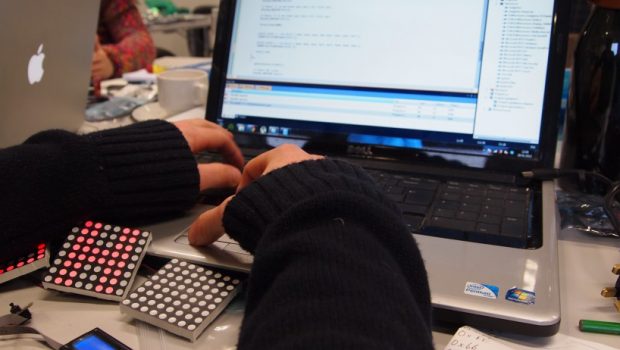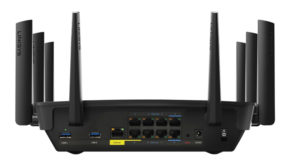ASSISTIVE TECHNOLOGY: Supporting Students with Autism
Autism Spectrum Disorder (ASD) is a neurodevelopmental disorder that prevents an individual from reciprocal social and nonverbal communication in public interactions. It further creates problems in developing, managing, and understanding relationships and restricts repetitive patterns of behavior, interests, & other activities.
Students diagnosed with Autism Spectrum Disorder (ASD) can have crucial problems in social communication, imagination, and constructive expertise. This is where assistive technology comes in. In this era of technological advancement, students can get widely benefited as it will improve their performance in education and provide aid in their rehabilitation process.
In this article, we’ll be discussing assistive technologies and how they can aid students with ASD to bridge the gap between their capabilities and desired milestones.
Assistive Technology for Autism Spectrum Disorder
Technology plays a significant role in supporting competency and skill development among students with ASD. It works as an assistive tool that can replace an ability that is either missing or impaired. It is essential since it will provide the aid needed to finish a certain task and will allow students to compensate for their disability or bypass it entirely.
Learning through a mobile device has been broadly used as an assistive technology for children with ASD. The key factor of using mobile apps is that one can have access to them at any given time and place. But parents often go through a tough time finding effective autism apps for kids, which will help their child improve his/her cognitive skills and behavioral traits.
Applications of Assistive Technology
Children diagnosed with autism spectrum disorder (ASD) go through a variety of obstacles in a classroom. Some of them face difficulty in making social interactions and communication, while others have a hard time reading facial expressions and following conversations.
To tackle this wide spectrum of students with ASD and their needs, the usage of assistive technology is crucial. It has been proven time and time again that assistive technology is key to helping students with autism learn and hone their skills to lead a sustainable life.
Assistive technologies are mainly applied in two ways — Software Application and Hardware Application.
Assistive Mobile Apps to Develop Skills
Autism spectrum disorder (ASD) differs from person to person in intensity and condition of the symptoms. So, it’s very tricky to gauge what sort of help a student needs.
This is where assistive mobile apps work their charm. They perform as an assisting tool in improving the impairments such as social, communication, repetitive behavioral, and functional skills among autistic children.
Noise Reduction & Auditory Apps
Since children with ASD are sensitive to environmental stimuli, they easily get upset by changes in routine and get fixated on things. Some of them are very sensitive about their clothing and loud noises, while others are very concerned about how certain foods feel in their mouth.
Some students suffer from auditory impairments from a very young age; they tend to get very sensitive to loud sounds. Teachers can download appropriate voice levels while adjusting the sound according to the students hearing capabilities.
They can reduce the loud noises that occur in the class and surround their students. The auditory app gives educators a visual indicator of loud noises by moving from green to yellow to red.
Organizational Apps
As students with ASD go through a tough time deviating from the norms, having a visual schedule around can come in handy. It gives them the ability to take their schedule with them and make changes accordingly.
These apps contain separate sections for organizing activities, creating checklists, planning, and keeping track of other related activities, which helps the students plan their schedule easily and efficiently.
Social Skills Apps
Adapting social skills is something that every child struggles with, whether they are diagnosed with Autism Spectrum Disorder (ASD) or not. Learning to be social gets very complex for students with ASD, as they don’t understand the concept.
Assistive technology can really make a key difference here by imparting these concepts in a much faster and effective way.
There are several apps that help students process body language and facial expressions in different public situations. These apps aid students in watching videos with a simple animated style that portrays playful skills and social-behavioral traits based on research.
Assistive Tools to Boost Confidence
Many students with ASD lose their confidence along the way while dealing with problems relating to vision, hearing, & communication. Their morale drops down because of not being able to interact properly or strike up a conversation.
That is why there are some unique, budget-friendly, and essential assistive tools that accommodate and tackle many autistic symptoms. By setting up these tools, parents can open up new horizons for their children.
AAC Devices
Struggling to comprehend certain languages is certainly a very crucial problem for children with ASD and their families. Sometimes many children become completely nonverbal, which makes it hard to understand their needs.
Augmentative and alternative communication (AAC) devices make it easier for parents and teachers to understand how a student thinks and takes effective measures accordingly.
Visual Aids
Many students with autism suffer from visual impairment, even though autism does not always associate with weakened vision. These students are mostly visual thinkers, pictures are their first language, and words are their second.
Being conclusive, literal visual thinkers, students with ASD process information in a more detailed way when it’s communicated through pictures or words. This technology makes visual images more accessible to students with ASD to help them visualize information.
That is why having visual aids can help increase the focus of the students while ultimately enhancing their vision. Visual aids can be applied in various ways, such as – enlarging images, captioning, magnifying screens, and large print books.
Other Assistive Tools
To enhance the collaboration of all the students in a class, especially those with ASD, strengthening communication is very much needed. Integrating into more social relations is essential to develop the inherent cognitive skills of the students with ASD.
Assistive tools such as – tablets, eye gaze boards, smart boards, speech synthesizers, and computer-generated interactive tools can truly stand out in this area.
Conclusion
Students with Autism Spectrum Disorder (ASD) can really shine both in academics and life if given the proper aid and tools at the right time. With the help of assistive technologies, they can achieve milestones in any classroom setting.
One thing is for certain; assistive technology plays a pivotal role in developing and aiding students with autism shape their life. One thing to consider here is that every child’s struggles are different in this disorder, and thus, their needs are different.
So, teachers and parents should keep them in mind when selecting the ideal assistive technology for a student. Every student needs to master daily living skills, organization, and recreational skills in order to function independently.













